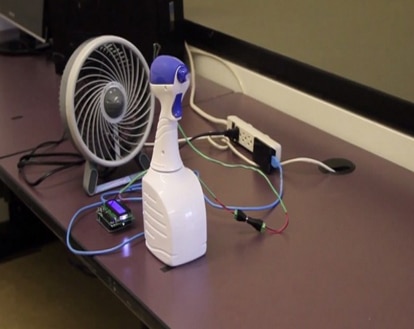Scientists have successfully transmitted a text message via the world’s first wireless molecular network in a breakthrough that could lead to better methods of sending data in challenging underground or underwater environments where electromagnetic waves cannot be used.
To send their message, researchers at the University of Warwick in the UK and the York University in Canada first transformed it into binary signals, then encoded the message into molecules of isopropyl alcohol (not vodka as specified in the video released by York University) and sprayed them across the room to a receiver.
“Imagine sending a detailed message using perfume – it sounds like something from a spy thriller novel, but in reality it is an incredibly simple way to communicate,” Weisi Guo, Ph.D. from the School of Engineering at the University of Warwick said. “Of course people have achieved short ranged signaling using chemicals, but we have gone to the next level and successfully communicated continuous and generic messages over several meters.”
“Our goal was to show that we could use chemical signals to transfer information, instead of radio [signals],” Nariman Farsad, a doctoral candidate at the Lassonde School of Engineering at York University, said. “We wanted to build a simple setup that other researchers could also use to do research, [to] show that this works and [to] take it further.”
While the technology won’t replace traditional wireless communication methods, it could still be used in applications where radio signals are unavailable but where chemical signals can still propagate by diffusion, such as in sewer systems, pipelines, shipwrecks and collapsed buildings. The researchers say the system could also be shrunk to work on the micro- or nano-scale in challenging environments such as the human body, where constraints with electromagnetic signals such as the ratio of antenna size to the wavelength of the signal hinder communications.
The research is published in the peer-reviewed journal PLOS ONE.






